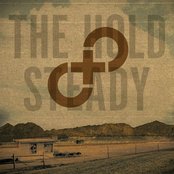
1901 Ordnance Survey 1:10,000 map of what was to become St. Matthews Hospital. Note it had it's own gas works, isolation hospital and chapel. I'm under the impression that Coulter Lane Farm was the farm that patients worked to feed the hospital.
I’m respectfully making an enquiry as to a bit of history that isn’t talked about much and may be quite sensitive for some. This is a subject that has long interested me in one form or another, and I think it’s about time I mentioned it on the blog. For over a century, on the outskirts of Burntwood, on the far side of Hammerwich, existed the Staffordshire County Lunatic Asylum, latterly know as St. Matthews Hospital.
This reasonable large facility was closed in the late nineties as part of the then government policy to shut down as many such institutions as it could, and transfer psychiatric care into the community, with varying degrees of success. The subsequent disposal of such hospitals, often set in massive grounds – several of which still lie derelict and rotting – was the single largest disposal of assets by the UK Government in British history. The story of these hospitals is largely unknown and has only really been dragged into the light by a small community of dedicated urban explorers, many of whom made it their business to record the fabric, history and social influence of these places before they were lost forever.
If this sounds morbid or unsettling, please don’t be disturbed; these people really care about what they’re doing and recording. I first became aware of the movement around 2004. If you’d like to see what it’s all about, I recommend two sites; Urbex|UK and Mechanised. Simon Cornwall, the genius behind Urbex|UK, has a beautifully presented site documenting his explorations of many places, from MOD installations to tin mines, but his main focus is on closed hospitals. His work to document the haunting Cane Hill Asylum in Coulsden, Surrey set the standard, and is beautiful, moving and startling. Simon has also documented Rauceby, his work with which gained him national attention on the BBC’s ‘Restoration’ program.
Mechanised, on the other hand, is a more personal, involved account of many places, but involves some fascinating explorations of former asylums. The photography is more artistic than documentary, and the prose burns. This is real, gut-wrenching stuff.
St. Matthews, the hospital close to us, has long since gone. Sold and mostly demolished soon after closure, it’s now a modern housing estate, up on the hill above Coulter Lane. The administration block and chapel remain, and were converted to modern apartments and a nursery respectively. Few now talk of the past. I know of few pictures of the hospital; oddly to us, many of these hospitals featured on postcards, yet I’ve never seen one of this institution. There is some mention online, but not much, and some very good material in the book ‘This Won’t Hurt! – A history of the hospitals of Lichfield‘ by Mary Hutchinson, Ingrid Croot and Anna Sadowski. I wonder how locals remember the place?
I’m not asking for patient or relative stories, but if you feel comfortable relating them, that’s fine; what I’m thinking is that this was a large community all of it’s own. Many local people worked there – as medics, nurses, domestics, handymen, engineers, gardeners. They had their own social club, sports teams and musical ensembles and groups. There was an economic relationship with the wider community. The place must have it’s own tales, stories and characters. There has to be a social history here that’s worth trying to record.
Please comment or contact me on BrownhillsBob at Googlemail dot com. Cheers.


 RSS - Posts
RSS - Posts







Hello Bob
I could write on every topic that arises on your pages Bob but time restrains me. By the way Selwyn Smith was the most wonderful of ice cream men of his time, he lived at the anchor bridge and for two bob he would fill a basin along with a packet of wafers.
Onto the topic at hand, St Margaret’s. As a young student around the time of 1965 – 1967 I was privileged to have a teacher by the name of Alan Lord, our careers teacher (what’s one of those), this was at the glorious school of Shelfield Secondary Modern, Mob Lane, most called us the Shelfield Shit Shovelers, the abbreviation works for some.
We were talking of St Margaret’s weren’t we? Alan Lord thought it good to amalgamate the teaching of students with the reality of life and thus we embarked through volunteerism to head off to St Margaret’s each week to work for a day. Our encounter was firstly the adventure on the coach which had been rented from Les Owen at the corner of the street, be it Streets corner (ever thought of the name)? We entered into new surroundings, a place most had not seen before, but heard of. When the coach arrived we were taken to an office for some form of orientation and split into groups, I was given the pleasure of serving tea along with Maggie Benyon, Graham Gilbert and Billy Rudd. We were given direction per say, go along this corridor and take the second door on the left. Moving along this brick and glass windowed corridor we came upon a courtyard to our left where a milk float was sitting empty and all its crates. which were full ,were sitting on the cobbled yard floor. A fellow came upon us and asked if we would please offer our strength, being virile young guys and gals, we did so and loaded up the float for him, possibly around thirty or so crates of milk, the fellow thanked us and went on his way. We headed off along the hall to where we should have been already and arrived at the second door on the left. Before we were allowed to enter a lady carrying a girl doll asked if we would say hello to her girl daughter, if doing so we could pass and enter into the kitchen, of course we said how beautiful she was and she allowed us to go on by. At last we entered the kitchen to do the duty we had come to perform. As we were being shown the ropes, the door burst open and there stood a fellow in brown smock with his red face ablaze in rage, “ yo young buggers think it’s funny” he spat at us, we were totally perplexed, “Yo think it’s funny doe ya, loadin mar float just afta ar emptied it”. We had now discovered exactly where we were. What had started out as a fun thing to volunteer for became a lesson well learned and one I still thank Alan Lord for. Moving on we prepared tea and then started serving it to the patients. The room was a sitting room with comfortable chairs that offered a view of the grounds, my first customer was a young fellow, maybe my older brothers age, that of 20 years, what a smack in the mouth that was, I had no real idea of mental problems, this could be my brother who was standing before me. Then the second person came forward, it was the lady with the girl doll and yes, once more I said how beautiful she was before offering tea. Then came the biggest smack of the gob, a neighbor two streets from my home came to the window for tea, with decorum I greeted him and offered tea, he wanted sugar but only in the saucer, he never recognized me.
Please don’t tear this writing apart as it is my true recollection of St Margaret’s at the age of fourteen. I now have friends with problems such as what these people suffered but today treatment is mostly done outside of the hospitals and it is a disgrace because we find most of these people who have no direct helping family now thrown onto the streets of our cities, towns and villages, all they want is love and help.
May God bless you Alan Lord for me and my friend’s weekly excursions to St Margaret’s Hospital; we learned a lesson on humanity.
Just to finish, the home was in immaculate upkeep, I have no recollection of the care that was provided, good or bad, but I am sure it was better than that of today.
http://thestudiesof7rin.dreamwidth.org/322.html might be of interest. I found it in Cannock Library’s local history section – wow, two years ago!
Aaah, even better, I got around to uploading a pic. of it too: http://s879.photobucket.com/albums/ab357/7rin/Books/?action=view¤t=TalesofCannockChasebyAlanTBrookes.jpg
The chapters aren’t long, but ISTR there being some pic’s included too.
Hi Bob,
Having once worked at the Staffordshire County Record Office, i know the records for Burntwood are house there. This is the admin history for the collection which is on their website:-
The County Asylum at Burntwood opened on December 20th 1864. It was the second County Asylum to be built, the first at Stafford (later St George’s Hospital) had been opened in 1818. The architect of the original building was William Lambie Moffatt (1807-1882) of Edinburgh.
The patient accommodation expanded when new male and female wards were built, 1897-8 and further development took place in the 1930s. During the First World War patients were transferred to Burntwood from Rubery Hill Asylum, Worcestershire and Berrywood Asylum, Northamptonshire, both of which were taken over as military hospitals. From 1940-1947 the hospital took emergency military and civilian patients, including soldiers evacuated from Dunkirk. In 1948 Burntwood Asylum was transferred to the National Health Service and was renamed St Matthew’s Hospital. The hospital closed in 1995 and the site used for a housing development.
This collection is strong both for administrative and patient records. The former include minutes of various committees up to the early 1960s, and the latter include admission registers and full patient case notes. The hospital had its own cemetery, consecrated in 1867, and there is a complete record of those who were buried there until 1956. Staff records date from 1866 but the fullest records are for the early 20th century. For the building itself there is little from the 1860s but there are plans which show the development of the site and buildings from the 1890s through to the 1970s.
Whilst i was a project archivist at Birmingham in 2005, i did their Council records, including the early history (pre-1948 and the NHS) on mental health provision – from the 1845 Act onwards really. If you want, i can post this information, as although it is centre on Brum, it will give some context and could be of general interest?
Hi Paul, sorry for not replying sooner, it’s been a bad week. Have trouble fitting everything in, sometimes. My apologies. It’s not lack of interest but time. Please forgive me.
I’d be absolutely delighted with anything you fancy contributing. Your post last week on the sewage problem prompted me on Sunday to explore the area of the sewage works in question. A fascinating place, and tracing the underground pipes was fun.
Your contributions are fantastic. This is an area of history I really thought few would be interested in, yet I’m bowled over by the contributions. It’s nice to know that it isn’t all darkness in the local memory. That makes me glad.
Please feel free to add anything you fancy. And thanks. I know this must eat your time. It’s a very kind thing you do.
Cheers
Bob
Dear Paul, Do you have an email address of a person that you know at the Staffs County Record Office that could assist me in finding the records of a Selina Insley admitted 31st 1907 died 13th May 1909…all I have found so far are the bare essentials. She is my wifes Great Grandmother and we are at the very early stages of research….we would dearly love to see and get copies of the full records for Selina Insley…and find exactly if possible where she is buried in the graveyard if possible. Best Wishes Derek Mutch..happy for you to email me if you want on derek.mutch@ntlworld.com
Hello Bob,
Another enjoyable blog………as usual Paul is a star, coming forward with a lot of interesting info. and I loved Brian’s recollections of his visit……both funny but sad that there are people who need places like this.
I vaguely remember visiting St. Mathews as part of a lifecourse subject with Shire Oak school. Naively,and wrongly, I went thinking that the people there would be crazy……Sorry but I was a child at the time, and I also remembered my Mom telling me she’d worked there for a while as a young woman and been attacked by a patient, who’d accused her of having an affair with her Policeman husband.
I recall walking down a long corridor with lots of windows looking out over lovely grounds and then seeing some patients who were sitting around very quietly. To me it seemed very peaceful, but I’m sure as kids we were only shown the ‘suitable’ things they wanted us to see.
My Mother in law,bless her, worked there in the kitchens, for many years up to her retirement and it closing,.Unfortunately she passed away 1996, so I can’t ask her for any memories.She was a prime example of what our politicians would like us all to be, a damn hard worker who pays into the system all their life, claims no benefits but then on retirement and about to reap some rewards back, i.e State Pension dies. Sorry, I’m straying from the subject.
It’s good that mental illness no longer carries the stigma that it once did…….with all the stresses of life today, there but for the grace of God we all go.
Snaring me in again? I have no tales of the hospital, but I love the old asylum buildings, and have spent hours trawling the UE sites you mention. There’s some great buildings- sadly many have been demolished or are rotting, but some have been converted and re-sused. It’s probably worth mentioning Great Barr Hall here- that was part of a mental hospital for some time, and like so many is now terribly neglected.
Hi everyone.
Thanks for the lovely contributions. I really thought folk would be horrified that I’d asked about the subject, which just goes to show how surprising you readers can be. It’s nice to know that St. Matthews isn’t necessarily a dark memory, but for a few, a place of enlightenment. That’s refreshing in a world that often treats the mentally ill with derision and cruelty.
Sorry I haven’t had time this week to reply to you all individually. Time really is at a premium this week and I try to put the accent on new material rather than replies. If you feel ignored, my apologies. That’s really not the case, I’m delegated by any and all contributions.
I will return to this, but clearly need to do a bit of reading first.
Again, thanks.
Cheers
Bob
Hi Bob
I have posted this, just to give context to the Burntwood Asylum. It is notes i made on how Birmingham dealt with mental health provision and a bit crude in it’s structure – just cut it if you don’t want it as it isn’t directly about Brownhills.
Prior to 1845 the general provision for those suffering from what would today be termed a psychiatric or mental illness was found in the workhouse or gaols. There had been an Act in 1808 allowing the collection of ‘rates’ to pay for local asylums but few had been built. Then, in 1845, Parliament passed the ‘Act to Amend the Laws for the Regulation and Provision of Lunatic Asylums for Counties and Boroughs, and for the Maintenance and Care of Pauper Lunatics in England’. This Act forced the boroughs and counties to provide adequate asylums at public expense for pauper lunatics. This led to a rapid building programme and within a generation most of Britain’s mental hospitals were built.
Birmingham was committed to building an asylum for 200 ‘lunatic paupers’ and in 1847 the Corporation purchased 20 acres and by 1850 had built an ‘asylum’, farm, wharf and lodges at Winson Green, next to the new Borough gaol. This institution catered for 300 patients, mainly from Birmingham, but also from Aston and King’s Norton. The asylum soon became so overcrowded, that they excluded incurable patients from out of Birmingham and a report of November 1859 clearly states that there was need for additional space. In 1861, there was the first addition, taking the capacity to around 500. Later there were to be several others, so there was eventually space for 625 patients. The farm was used to help the asylum and the prison to be more self sufficient, by providing meat through the nurture of cows, pigs and sheep, and also milk, so helping to keep costs down. By 1870, the asylum was taking private patients and patients from as far a field as London, Ludlow and Birkenhead.
In July 1876, a second hospital was ordered to be built at Rubery Hill, Northfield. The hospital was to cater for 625, later 812 patients, which were considered to be of ‘epileptic and imbecile’ nature. The hospital opened in January, 1882, allowing the transfer of patients from Winson Green in order to carry out much needed renovation work there. In February 1887, the Committee report that Winson Green was more ‘brighter and comfortable’ after recent renovation and that the patients were well cared for and exercised. At Rubery, as the condition of the patients was less acute, they could attend church and were treated to dances and free pantomimes at the Royal and Prince of Wales theatres. In 1889, the Warwick Asylums Committee signed an agreement to transfer patients to Birmingham.
In 1892, the Committee were again reporting overcrowding. In 1897, the Committee opened Sandwell Hall, as a branch of Winson Green, for ‘quiet and dependable’ convalescent patients that allowed some freedom. Further, the Committee began investigating Hollymoor Farm, which adjoined the Rubery Estate and the 120 acre site was acquired in 1900. In August 1900, The Leverettes was opened for the reception of around 45 female convalescent patients from Winson Green and in August 1902, Glenthorne House followed, for a similar number and purpose. In May 1905, Hollymoor was opened.
In 1911, with the City Extension Act, the hospitals were beginning to struggle with the population demands and so Stechford Hall was leased. In 1913, the Mental Deficiency Act established four classes of mental deficiency (idiot – unable to guard themselves against common physical dangers such as fire, water or traffic; imbecile – could guard against physical dangers but were incapable of managing themselves or their affairs; feeble-minded – needed care or control for protection of self or others and moral defectives – who had vicious or criminal propensities (use of this category developed into unmarried women with babies). ‘The Act placed on local government responsibility for the supervision and protection of defectives, both in institutions and in the community’. In WWI both Rubery Hill and Hollymoor were converted in military hospitals (see BCC/BS).
By 1925, the Council were contracting asylum space in Worcestershire, at Powick and Barnsley Hall. Also, the Corporation took over Coleshill Hall and Park, for the eventual residency of around 300 patients, to replace the Agatha Stacey Home. The institution did not open until September, 1929. With the Local Government Act, 1929, the Corporation took over the old Poor Union institutions, so responsibility for Moneyhull came to the Public Assistance Committee, then, was transferred to the Mental Deficiency Committee, which looked after patients not committed to an asylum under the Asylums Committee.
In November 1930, the name of this Committee was changed to the Mental Hospitals Committee as the word ‘asylum’ had become unfashionable after the Mental Treatment Act of that year, which had allowed voluntary treatment for the first time. By the early 1930’s, the Corporation allowed patients to undertake occupational work at Moneyhull, such as basket making and tailoring. Entertainments were also supplied; the Colony had its own band, visited the cinema and held sports days. The farm grew crops and nurtured cattle and pigs. The Committee also took over the Marston Green Cottage Homes, for pauper children and turned them into another part of Coleshill Mental Hospital, doubling its capacity to around 800 patients. The Committee purchased the Winterdyne Estate in Tamworth in 1946, as a site for a new hospital. In 1948, the Mental Deficiency and Mental Hospitals Committees were disestablished, after the National Health Service Act came into force and the function was transferred to the new National Health Service.
Pingback: BrownhillsBob's Brownhills Blog
My mom was an inpatient at St Matthews Hospital Hammerwich for about six months during the 1970’s for various reasons I won’t go into but were more of the makings of my step-father than herself. Hence my afinity to Hammerwich for railway matters as well as visiting there.
Although it was daunting to visit there and see many people not fully quite in mind or body at times the staff went out of their way to make you feel comfortable and welcome. After all these dedicated staff dealt with all sorts of problems with the residents and who could unintentionally cause problems at a moments notice. My moms problem was mild compared to some but due to family circumstances she felt she was in a better place than home. Similar to my circumstances when I was at a children’s home in Stafford and Cannock.
Mom gradually improved over the time there thanks to all the workers and the fact they helped her understand she wasn’t going as some people put it mad and that all what was happening to her and around her was caused by external people and influences.
I must say that I didnt talk about visiting St Mathews much and it was difficult to get there, most times walking from Brownhills or Muckley corner to see her but she was my mom and deserved to see the family she wanted to see.
As ever Bob, the topics that come up on your blog are wide ranging and fascinating.
I was a trainee social worker for Walsall Council in the mid 1970’s and as part of my so called ‘training’ (sadly lacking in those days) was required to work a short placement at St Mathews. I think the ward was called Selwyn (?) and was a mixed induction ward where patients were assessed for possible treatment. As you can imagine it was a whole new experience for a 18/19 year old and I was terrified most of the time. I remember the place as being huge with endless corriders, beautifully kept and the staff as, by and large, caring and dedicated. The ward itself was homely and the atmosphere relaxed but the doors were locked after every exit and entry.
As a community volunteer some years later I had the sad task of taking a man to be admitted on a voluntary basis. He had serious mental health problems and for him St Mathews was a place of refuge where he felt safe from the pressures of the wider world.
I don’t think that there is any taboo in talking about mental illness today – after all a great number of us will have personal contact with it in some form. There must be many people in our community who either worked at St Mathews or who have experience of visiting a family member there. It would be great to hear from them.
Pingback: The folk on the hill « BrownhillsBob's Brownhills Blog
Pingback: BrownhillsBob's Brownhills Blog
Pingback: Chase Nursing Home: new statement issued | BrownhillsBob's Brownhills Blog
Pingback: The other ‘Wood: from the air… | BrownhillsBob's Brownhills Blog
Pingback: The man in the centre | BrownhillsBob's Brownhills Blog
Pingback: Burntwood Mental Hospital R.A.F. Dance Band 1945
This is an amazing blog, as a new blogger myself, it is great to see such a successful blog on such and interesting topic! What intrigues me more is that as a University student in the third year of my degree, I am currently focusing my dissertations upon Burntwood Asylum and was hoping to retrieve some information that you have obtained over your time looking into St Matthew’s please?
I hope to hear from you soon,
and share some ideas of what we have both recorded.
Thank you,
a wonderful blog,
Lauren Haines
Hi Lauren,
The history of the Burntwood Asylum is tied in with the article appearing on this blog entitled “Believed to have been a good man” concerning the Rev John Poole. He was there at the beginning!…
http://brownhillsbob.com/2014/08/16/believed-to-have-been-a-good-man/
From the book written by his niece… Found Ready: Memorials of the Rev George Poole by Sarah Mason 1890….
In 1865 the building of a large county lunatic asylum was completed at Burntwood, and in April he wrote…
”The asylum is now receiving patients. About 120 have arrived. A chaplain is to be appointed. The office I cannot undertake, though at present I attend early on a Saturday morning and preach to them….my attendance at the lunatic asylum compels me to remain here until I meet with a curate or find a fellow-helper willing for a short season to undertake my duties. The patients seem to delight in religious services. It would have touched your feelings to have to have heard their voices yesterday when singing one of our beautiful hymns.”
The asylum soon mustered its patients by the hundreds. A letter dated the 10th June 1867 tells…
“The Bishop comes on Friday to consecrate the asylum burial grounds.”
After the regular duty at the asylum was resigned to a chaplain the inmates were not forgotten. His friendship with the medical officers was a source of pleasure to himself, and whenever he could minister to the patients, his time was cheerfully given up. Friendly visits were often exchanged. For many years scarcely a summer ever passed without a garden-party at the Vicarage of as many patients as could be safely trusted, with some attendants.
Actually the connection between the two articles may be more intriguing as the new chaplain for the asylum was none other than a Mc Clean relative!…
1st Sep 1866
Appointments…Rev D S McClean, incumbent of Chasetown, Cannock Chase; Chaplain of the County Asylum, Burntwood, Staffordshire.
Also McClean’s mate RC Chawner seems to have probably been Chairman of the County Lunatic Asylum Committee.
January 1862
“Staffordshire, it appears, is a melancholy exception…”
At Stafford—where also a county meeting will shortly be held to agree upon an expression of sympathy with the bereavement of her Majesty—some startling and very painful revelations were made with respect to the increase of lunacy in the county.
When county asylums were first established for the reception of those poor persons afflicted with the greatest misfortune that can befall humanity, the judicious method of treatment adopted, and its comparative inexpensiveness, brought to light so many cases, that an impression not unnaturally prevailed for a time that insanity was on the increase. Careful enquiry has since shown this view to be unfounded, and it has been satisfactorily proved that lunacy of all kinds is in reality less prevalent on the whole than it was formerly, when common sense and medical science had not come to a proper understanding as to the treatment of cases of mental derangement.
But Staffordshire, it appears, is a melancholy exception to the general rule, which is reversed in more ways than one; for not only is insanity increasing year by year, according to the authorities consulted, but the increase is larger among the males than the females, and the cases are said to be generally incurable. It has been found necessary, under these circumstances, to sanction the erection of an additional asylum at Burntwood where an estate is about to be purchased at a cost of about £7,000.
We hope that an enquiry into the special causes which have brought about this exceptional and lamentable state of things, may also lead to the suggestion of some means whereby it may be alleviated.
Hi Everyone, I have just found out my relative was transferred from Broadmoor to Burntwood Asylum in 1975, obviously the family did not talk about it in those days, hence me only just finding out. My relative is sadly deceased now, but if anyone who worked there knew him – Leslie Russell – I would love to hear from them.
Hi ,
I got on this site because I was looking for a hospital near Brownhills Chester road . I was driving home one day a few years back , from my boyfriends ( he lives near the huge tin man on the island ) . When I saw a nurse walking up the hill . She was wearing 1940s uniform. I never stopped but thought it rather odd . Then it dawned on me I may have seen a ghost ? I’m interested to hear that there was once a hospital but was it near Chester road ( Brownhills end ) . Please let me know your thoughts thanks . Regards Karen
There used to be a war time hospital down Lichfield Road based in the memorial hall, perhaps some connection there? The principle nurse was Iris Arnold